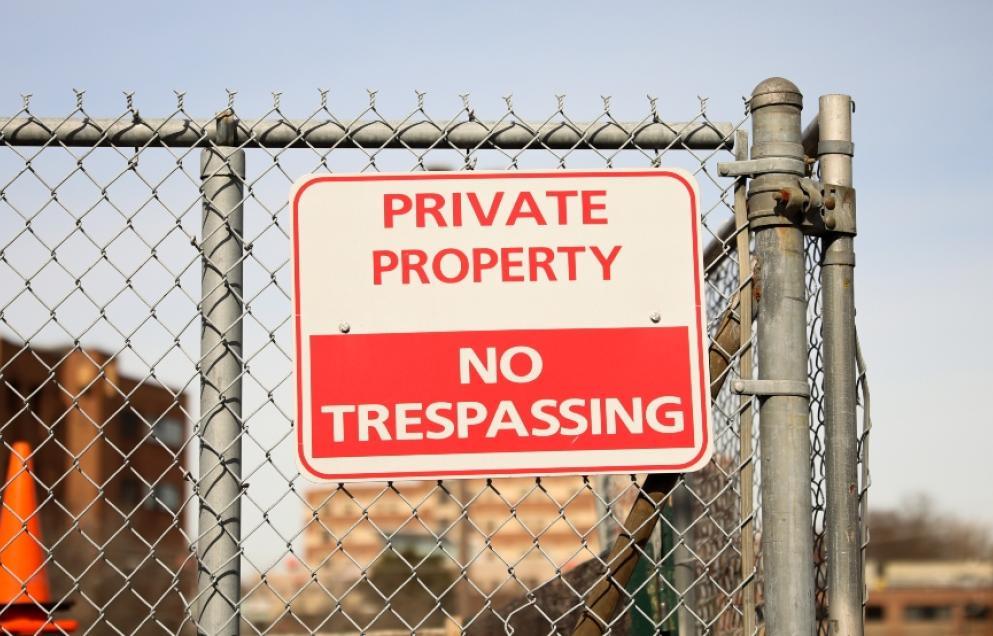Trespassing – who is responsible and who is liable?
Published
Read time
By Tim Weymouth, Associate Director, ACII, AIoL
In one of my voluntary Board roles, I was recently asked about trespassers: “Do I owe a duty of care to trespassers if they wander onto land that I’m responsible for, and would insurance cover me?”
The question of who is responsible is determined by the law/tort, which places a duty of care upon companies or persons to try and avoid injuries being sustained. Public liability insurance aims to respond to allegations of negligence that have given rise to injury or property damage.

In some cases, it’s quite easy to draw a line between the injury or incident and negligence. Failure of a company to undertake an appropriate risk assessment for employees carrying out a task or provide PPE, which would have prevented or reduced the injury, are easy examples. It becomes harder when there’s more of a question over allegations of negligence, and we have seen claims arising from property/land owners due to trespassers being on the land in the type of situation described above.
What does the official guidance say?
The Government website offers some advice:
The duty of care to trespassers arises only when the occupier is aware of a danger or has reasonable grounds to believe that it exists, knows or has reasonable grounds to believe that a trespasser may be, or come into the vicinity of danger and, in all the circumstances of the case, the risk of a trespasser coming into the vicinity of the danger is one against which the occupier may reasonably be expected to offer some protection.
DWF expand on this:
The Occupiers’ Liability Act 1984 imposes a duty on occupiers to take reasonable care for the safety of trespassers in respect of any risk of their suffering injury by reason of any danger due to the state of the premises or to things done or omitted to be done on them.
The threshold test in s.1 (3) of the Act provides that a duty is owed to trespassers in respect of any such risk if:
(a) the occupier is aware of the danger or has reasonable grounds to believe that it exists;
(b) the occupier knows or has reasonable grounds to believe that the trespasser is in the vicinity of the danger or that he may come into the vicinity of the danger; and
(c) the risk is one against which, in all the circumstances of the case, the occupier may reasonably be expected to offer the trespasser some protection.
What does this mean for you?
In short, as a land/property owner, you do have a duty of care to trespassers – but if you’ve taken steps to try and mitigate risks, this can reduce or remove it. Further liability insurance policies can provide legal indemnity regardless of guilt – protecting the innocent as much as the guilty. This means that should someone who has wandered into your private property and been injured look to bring a claim against you, then you could call upon your public liability policy to respond to the legal action.
Legal precedents in similar cases
In the event of a claim, the claimant would have to prove there has been negligence on your behalf. It’s important to note there is case law (British Railways Board v. Herrington (1972)) where the House of Lords found in favour of the trespasser. This case established that there could be a duty of care owed to a trespasser, superseding the previous legal precedent held in Addie v Dumbreck.
In the Herrington case, the facts were:
- British Rail operated a railway line that was fenced off from where children played.
- The local station master was aware that children had been witnessed on the line, but the fence was not repaired.
- The fence was in disrepair, and a child aged six trespassed on the line and was injured on the live rail.
Lord Pearson emphasised that occupiers (in this case British Rail) have a greater need to take practical steps to deter trespassers, particularly children, from accessing places that pose a danger to them. Despite this precedent being established 12 years before the Occupiers Liability Act, Herrington would still have had to satisfy the Act’s three tests.
Risk assessments protect every party
In the event of a claim against you, your chief line of defence would be to present proven actions that you have taken to mitigate risk. Your insurer’s appointed solicitors would aim to argue that you’d addressed danger through a risk assessment and followed the recommended actions – for example with regard to signage, record-keeping of incidents and near misses, and making staff aware of when it could happen.
Although we’ve flagged legal precedent in favour of the trespasser, there have been others where the case against the landowner has been dismissed, such as Buckett v Staffordshire County Council (2015). As long as you have taken steps to reduce the risk of injury or incident, you should have a reasonable case.
Your next steps
Given the above, I would suggest you:
- Review your risk assessment to ensure you have one covering trespassers. If you don’t, please reach out to me at [email protected] for a template.
- Continue keeping a record of incident near-misses and make sure employees are aware of potential high-risk areas.
Then, if you should receive a legal notice, you will be able to call upon your insurers and have the best chance of repudiating the accusations.
